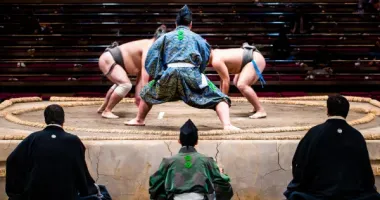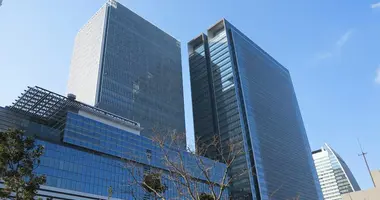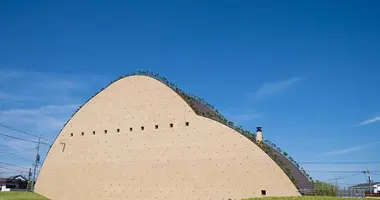Seto Guide: Exploring Japan's ceramic heartland
Nestled in Aichi Prefecture, about 20 kilometers northeast of Nagoya, lies the city of Seto - a veritable treasure trove for pottery enthusiasts. With a ceramic production history spanning over a millennium, Seto has earned its place as one of Japan's six most important ancient kiln towns. The city's legacy is so profound that the Japanese term for pottery, "setomono," derives from its name. As you wander through Seto's streets, you'll discover a world where tradition and innovation harmoniously coexist, offering visitors a unique glimpse into Japan's rich ceramic heritage.
The history and significance of Seto's ceramic industry
The story of Seto's ceramic industry is a tale of artistic evolution and cultural exchange. Dating back to at least the 10th century, Seto's pottery production truly flourished during the Kamakura Period (1185-1333). It was then that local craftsman Toshiro Kato, after studying porcelain-making techniques in China, established his kiln in Seto. His choice was influenced by the discovery of high-quality clay in the region, which proved perfect for creating exquisite ceramics.
Kato's legacy, known as "Old Seto," laid the foundation for centuries of innovation. During the Edo Period (1603-1867), another significant figure emerged - Tamikichi Kato. He brought advanced porcelain production techniques from Arita in Kyushu, further elevating Seto's reputation. The pottery industry received financial backing from the ruling Owari clan, ensuring its prosperity well into the Meiji Period (1868-1912) and beyond.
As Japan opened to the world, Seto's ceramics gained international recognition. The city's artisans began producing a wide range of items, from traditional tea ceremony wares to modern industrial ceramics, adapting to changing times while maintaining their commitment to quality and craftsmanship.
Must-visit museums and cultural centers in Seto
Seto boasts an impressive array of museums that showcase its rich ceramic heritage. The crown jewel among these is the Seto-gura Museum, located on the second floor of the Seto-gura complex. This museum offers a comprehensive journey through Seto's pottery history, from ancient shards to modern automation. With exhibits spanning the Heian Period to contemporary times, it provides an excellent overview for visitors.
For a more hands-on experience, the Seto Ceramics & Glass Art Center is a must-visit. This free-to-enter facility not only hosts permanent and temporary exhibitions but also offers a studio shop where visitors can purchase works by local and international artists.
Art enthusiasts should not miss the Seto City Art Museum, which houses a permanent collection of ceramics and hosts special exhibits featuring ceramics, paintings, and other art forms. For a more whimsical experience, the Maneki Neko Museum showcases a vast array of traditional and contemporary beckoning cat figurines, a popular good luck charm in Japan.
Families with children will enjoy the Seto Novelty Children's Creative Center and the Seto Municipal Center of Multimedia and Traditional Ceramics. These free museums offer interactive experiences where visitors can try their hand at various ceramic-making activities.
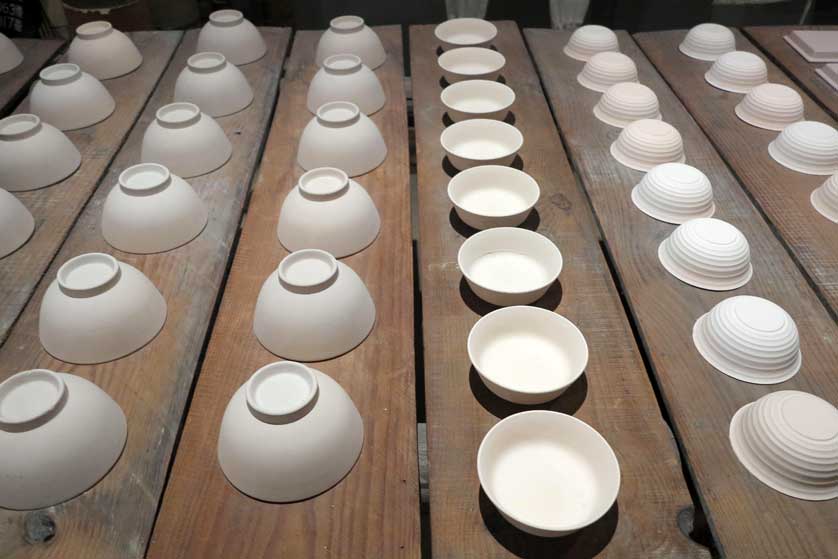
Seto-gura Museum
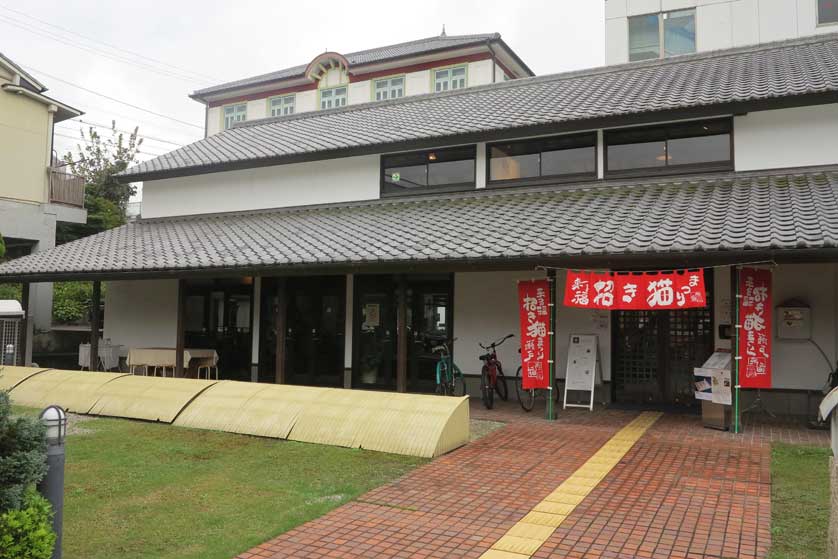
Seto Ceramics & Glass Art Center, Seto city, Aichi
Exploring Seto's temples and shrines
Seto's spiritual landscape is as rich as its ceramic tradition. The Fukagawa Shrine and adjacent Suehiko Shrine hold special significance for pottery enthusiasts. The Suehiko Shrine enshrines the spirit of Toshiro Kato, the master potter who established Seto as a ceramic center. At Fukagawa Shrine, visitors can admire a pair of koma-inu (mythical lion-dogs) believed to be crafted by Kato himself.
In the quiet Kamagaki district, the Hosenji Temple offers a serene retreat. This Zen temple, over 750 years old, is renowned for its beautiful Sanmon entrance gate. Nearby, you can explore the Seto Hongyo Kiln and the walls of Kamagaki-no-komichi, which are embedded with tools used in pottery firing.
Another noteworthy site is Hounji Temple, famous for its large ceramic bell. This bell was created to replace the original metal one, which was melted down during World War II. The temple stands as a testament to Seto's resilience and its deep-rooted connection to ceramics.

Fukagawa Shrine, Seto city, Aichi Prefecture

Hosenji Temple, Seto city, Aichi Prefecture
Annual ceramic festivals and events in Seto
Seto's calendar is punctuated with vibrant festivals celebrating its ceramic heritage. The Seto Toso Festival, held in April, honors Toshiro Kato, the pioneer of Seto pottery. This festival transforms the city into a lively hub of pottery fairs, traditional performances, and hands-on workshops.
September brings two major events: the Setomono Festival and the Maneki Neko Festival. The Setomono Festival is Japan's largest pottery and ceramics event, featuring over 200 merchants lining the Seto River. It's a paradise for pottery lovers, offering everything from everyday items to unique art pieces at bargain prices.
The Maneki Neko Festival celebrates the popular beckoning cat figurines. This two-day event in September includes exhibitions of specially crafted Maneki Neko from around the world, face painting for children, and even cat-shaped lunch boxes.
For those visiting in November, the Seto Pottery Studio Fair and Market offers another opportunity to explore and purchase local ceramics. These festivals not only showcase Seto's products but also provide insight into the city's vibrant ceramic culture.
Unique ceramic attractions and landmarks in Seto
As you explore Seto, you'll find that ceramics are woven into the very fabric of the city. A stroll along the Seto River reveals bridges adorned with ceramic decorations. The Minami, Kinen, Koen, Miyamae, Miyaki, and Azuma bridges each offer unique ceramic embellishments, creating a picturesque cityscape.
One of Seto's most charming attractions is the Kamagaki-no-komichi, a 400-meter-long winding footpath in the eastern foothills of the town. This narrow street is lined with old pottery tools and kiln parts, offering a glimpse into Seto's rich ceramic heritage. As you walk along this tranquil route, you'll pass by pottery studios and art galleries, immersing yourself in the city's artistic atmosphere.
For a unique experience, visit the Kamagaki-no-komichi Museum/Gallery. Housed in a historic early 20th-century building, it features a bathroom tiled with Hongyo tiles and a collection of Umanome (horse eye) plates, showcasing the versatility of Seto's ceramic production.
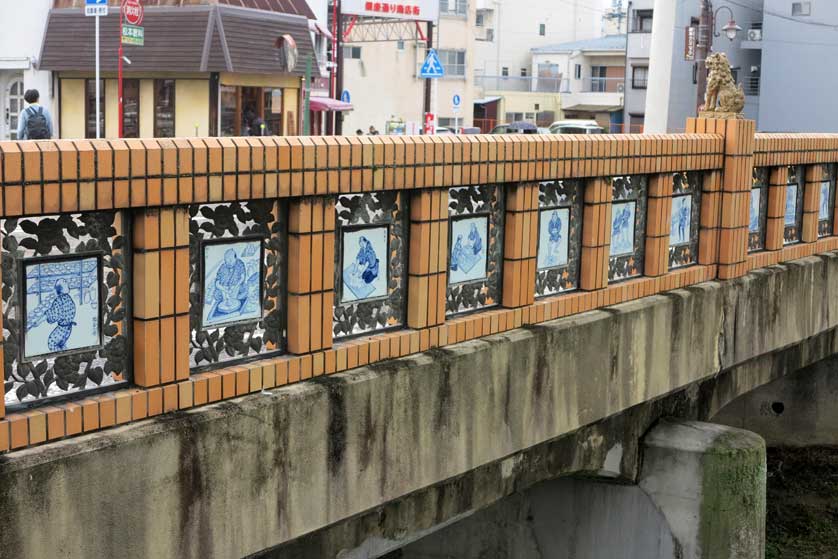
Miyamae Bridge, Seto city, Aichi
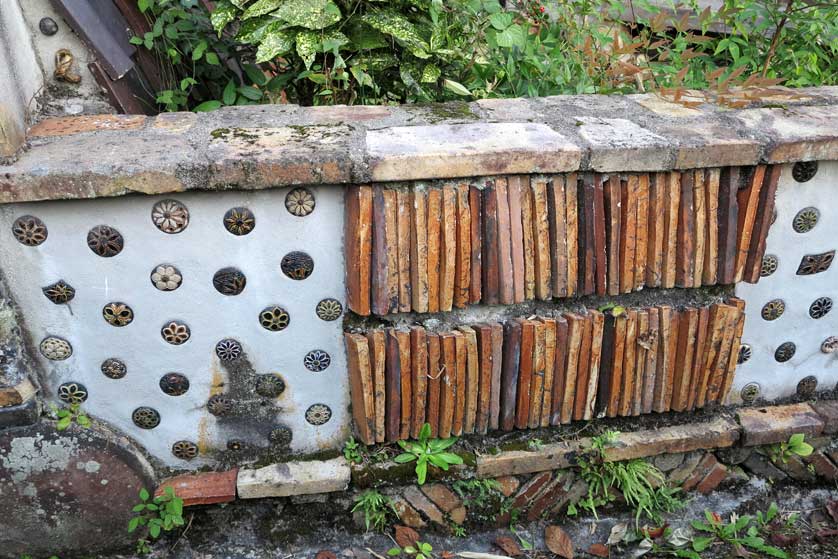
Kamagaki-no-komichi, Seto city, Aichi Prefecture
How to get to Seto and where to stay
Reaching Seto is relatively straightforward. The main access point is Owari-Seto Station, accessible via the Meitetsu Seto Line from Sakae-machi in Sakae and Ozone stations. The journey takes about 30 minutes and costs 460 yen one-way. Alternatively, you can reach Shinseto Station via the Aichi Loop Line from Toyota.
For accommodation, while Seto is quiet in the evenings, there are a few options for those wishing to stay overnight. The Shinseto Station Hotel, conveniently located near Shinseto Station, offers comfortable rooms with modern amenities. For a more budget-friendly option, the Seto Park Hotel provides comfortable accommodations in a pleasant setting adjoining a temple.
Upon arrival, head to the Tourist Information Office in the round, glass Parti Seto building near Owari-Seto Station. Here, you can pick up maps and pamphlets in various languages to help navigate the city.
Day trip ideas and nearby attractions in the Seto region
While Seto itself offers plenty to explore, its proximity to other interesting locations makes it an excellent base for day trips. Just a short train ride away, Nagoya offers a blend of modernity and tradition, with attractions like Nagoya Castle and the futuristic Oasis 21 complex.
For those interested in Japan's automotive industry, Toyota City is within easy reach. Here, you can visit the Toyota Commemorative Museum of Industry and Technology to learn about the company's evolution from a textile machinery manufacturer to a global automotive giant.
Nature lovers might enjoy a trip to the Korankei Gorge, particularly beautiful during the autumn leaf-viewing season. The area offers hiking trails, traditional buildings, and the picturesque Taigetsukyo Bridge.
For another perspective on Japan's ceramic traditions, consider visiting Tokoname, another of the Six Ancient Kilns of Japan. Famous for its red clay teapots, Tokoname offers a different flavor of ceramic craftsmanship.
As you plan your visit to Seto, remember that the city's charm lies not just in its museums and workshops, but in the very air you breathe. Here, the legacy of centuries of ceramic mastery is palpable, inviting you to immerse yourself in a unique facet of Japanese culture. Whether you're a pottery enthusiast or simply curious about Japanese craftsmanship, Seto promises a memorable journey through Japan's ceramic heartland.
